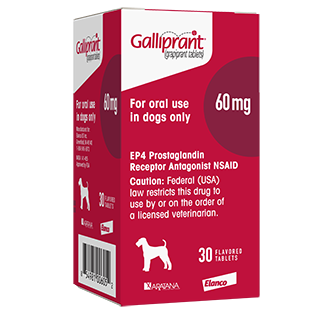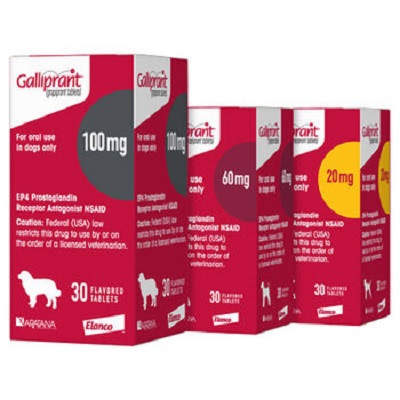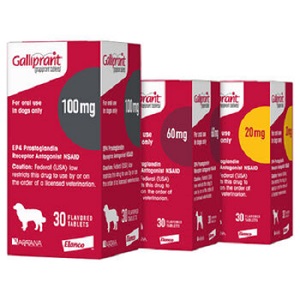Galliprant is a first-in-class prostaglandin receptor antagonist (PRA), a non-COX inhibiting NSAID. It specifically targets the EP4 receptor, the primary mediator of canine OA pain and inflammation. You can start treatment from the earliest diagnosed stages. Give these dogs the relief they need and help keep them doing the things they love.
What is canine osteoarthritis?
Canine osteoarthritis is the most common cause of chronic pain in dogs and it doesn’t just occur in older, heavy dogs. It’s a painful disease that causes inflammation and swelling in a dog’s joints.
Early management and its benefits:
Once pain sets in, a dog is less likely to move and may put on a few extra pounds. That can put more stress on joints and may lead to even more inflammation and pain. It’s a vicious cycle.
 |
Why Galliprant?
If you're a veterinarian, click here to learn more. If you're a pet owner, click here to learn more. |
Indications:
Galliprant is indicated for the control of pain and inflammation associated with osteoarthritis in dogs.
Important Safety Information:
Not for use in humans.
For use in dogs only. Keep this and all medications out of reach of children and pets. Store out of reach of dogs and other pets in a secured location in order to prevent accidental ingestion or overdose. Do not use in dogs that have a hypersensitivity to grapiprant.
If Galliprant is used long term, appropriate monitoring is recommended. Concomitant use of Galliprant with other anti-inflammatory drugs, such as COX-inhibiting NSAIDs or corticosteroids, should be avoided. Concurrent use with other anti-inflammatory drugs or protein-bound drugs has not been studied.
The safe use of Galliprant has not been evaluated in dogs younger than 9 months of age and less than 8 lbs. (3.6 kg), dogs used for breeding, pregnant or lactating dogs, or dogs with cardiac disease. The most common adverse reactions were vomiting, diarrhea, decreased appetite, and lethargy.




